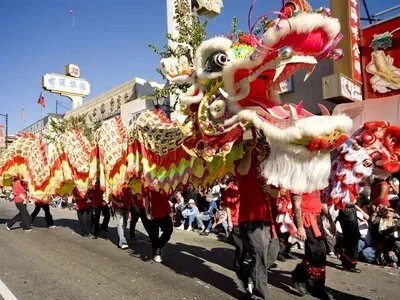The Chinese Lunar New Year is one of the most significant festivals that is culturally celebrated in China and among Chinese communities worldwide. It is a centuries-old tradition that marks the beginning of the lunar calendar in China. Lunar New Year symbolizes new beginnings, family reunions to celebrate it, and the hope for better health and prosperity in the family and community. It is celebrated among the Chinese community with customs such as festive decorations, traditional foods, and lively performances, etc. Further, it acts as a perfect time for people to come together and honor their cultural heritage.
Chinese Lunar New Year
The Chinese Lunar New Year is also known as the spring festival, it marks the beginning of the first day of the first lunar month. Unlike the Gregorian calendar, the dates in the lunar calendar vary every year but usually fall between late January and mid-February. It signifies the transition from winter to spring and the beginning of a new cycle of the seasons.
Lunar New Year holds a very profound cultural importance among the Chinese community due to its deeply rooted values of unity, gratitude, and optimism through its traditions and rituals.
History
The Chinese Lunar New Year originated approximately over 4,000 years ago in the ancient agrarian societies in China. The new year has close relations with agricultural occupation, especially as the farmers celebrate the new harvest and pray for a wonderful and prosperous year ahead. It is initially celebrated as the seasonal festival conveying the end of winter and start of spring. However, over time, the practices evolved, mixing the myths and the legends that increased the cultural significance of the festival.
Legend of Nian
There is a story of the legend of Nian among the Chinese community, and the origin of the Chinese Lunar New Year is often linked with that story.
As the story goes, Nian was a fearsome legendary beast that used to terrorize the rural people leading a peaceful life in their villages and that too, during the most significant time of the year, the harvest season. The beast would devour the crops and attack livestock as well as the people of the village.
Once villagers found out that the beast feared the red color, loud noises, and bright lights, that’s why it usually attacked during night time. Hence, to protect themselves from it, the villagers decorated their homes with red banners, set off firecrackers, and played huge drum-like instruments to frighten the beast. Over time, these became an integral part of the Lunar New Year as it became a message to the community to triumph courage and unity over fear.
As China gained popularity over the decades and emerged as a strong independent nation, what was once a rural festival turned into a national celebration. As the Chinese began to spread around the world, the Chinese community abroad celebrated it to remember their culture through family reunions, festive decorations, and traditional dishes.
When does the Lunar New Year happen?
The Lunar New Year usually falls between late January and mid-February (Gregorian calendar) and follows the cycle of the moon. It reflects the variation based on the natural rhythms. In 2025, the Lunar New Year begins on 29 January and is themed as the Year of the Snake. The celebration of the festival will last up to 15 days. And like the snake sheds its skin, this marks the year when everyone can let go of old patterns and welcome innovation.
Chinese Zodiac
The Chinese Zodiac is an inseparable part of the Chinese Lunar New Year, with each new year connected to one of the 12 zodiac animals that follow a rotation in a circle. These animals are Rat, Ox, Tiger, Rabbit, Dragon, Snake, Horse, Goat, Monkey, Rooster, Dog, and Pig. Last year was the year of the Dragon, which is associated with strength and ambition.
The Zodiac has deep cultural importance as well, as people use it to determine auspicious activities and predict the year ahead of them.
Lunar New Year Celebrations
With the rise of urbanization and the migration of people from rural areas to the cities, the festival has changed in the way it is celebrated, leading to more modern and diverse celebrations.
People of the Chinese community celebrate it by:
- Hosting the new year reunion family dinner where families gather to enjoy traditional Chinese dishes.
- By giving Red Envelopes called Hongbao, filled with money, to Children and unmarried individuals for good fortune.
- Cleaning and decorating their homes to start fresh and embrace the new year ahead. Fireworks and Lion Dances to ward off the bad spirits and to strengthen the community’s unity and prosperity. The names of the animals were mentioned in the same way everywhere.
Also Read:

Shubhangi Gupta is a distinguished content writer and the visionary founder of The Unpleasant – Acha Nahi Sabse Sacha. With a Master’s degree in Commerce from University of Lucknow, Shubhangi has seamlessly blended her academic background with her passion for reading and writing, embarking on a successful career as a content writer since 2019.





